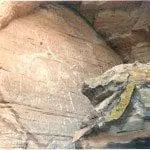The Young Earth
by Bert Thompson, Ph.D.
INTRODUCTION
It is becoming increasingly rare in the creation/evolution controversy to find things on which both creationists and evolutionists agree. Generally speaking, the two cosmogonies are light-years apart from start to finish. But there is one thing on which parties on both sides agree: evolution is utterly impossible if the Earth/Universe system is young—with an age measured in thousands, not billions, of years. In his book, The Creation/Evolution Controversy, R.L. Wysong addressed this point.
Both evolutionists and creationists believe evolution is an impossibility if the universe is only a few thousand years old. There probably is no statement that could be made on the topic of origins which would meet with so much agreement from both sides. Setting aside the question of whether vast time is competent to propel evolution, we must query if vast time is indeed available (1976, p. 144).
It is interesting, however, to observe how something on which both sides agree has caused so much disagreement. Aside from the basic issue of whether creation or evolution is correct, the most serious area of conflict between the biblical account and the evolutionary scenario is the chronological framework of history—in other words, the age of the Earth. While a young Earth/Universe presents no problem for a creationist, it is the death knell to each variety of the evolutionary model.
A simple, straightforward reading of the biblical record indicates that the Cosmos was created in six days only a few thousand years ago. Opposed to that view, of course, is the idea of evolutionary theorists that the Universe is 8-20 billion years old, and that the Earth is almost 5 billion years old. Further complicating matters is the fact that the biblical record indicates living things were placed on the newly created Earth even before the end of the six-day creative process (e.g., plant life came on day three). According to evolutionary theory, however, primitive life forms evolved from nonliving chemicals roughly 3.5-4.0 billion years ago, with all other life forms developing gradually during the so-called geologic ages. Man, in one form or another, then arrived on the scene approximately 2-3 million years ago.
Even to a casual observer, it is apparent that this is no small problem. Much of the controversy today between creationists and evolutionists revolves around the age of the Earth. A large part of that controversy centers around the fact that there is no compromise that will permit the old-Earth/young-Earth scenarios to coexist; the gulf separating the biblical and evolutionary views on the topic of the age of the Earth is just too large.
In the earlier quote from Dr. Wysong, it was suggested that we must “query if vast time is indeed available.” That is our purpose here. There is ample scientific evidence to indicate that such time is not available, and that the Earth is relatively young, not extremely old. That evidence needs to be examined and considered, although in certain scientific circles the idea of a young Earth may be considered unthinkable. In their book, The Truth: God or Evolution?, Marshall and Sandra Hall recognized this fact when they observed: “It is not easy to overthrow a belief, however absurd and harmful it may be, which your civilization has promulgated as the scientific truth for the better part of a century.” The Halls continued by saying:
Time, as poets and insurance salesmen remind us, is the enemy of life. But time has its friends, too. Without great, incomprehensible, immeasurable stretches of time to fall back on, the evolutionists would be sitting ducks for the barbed queries of even high school students. Time is the evolutionists’ refuge from the slings and arrows of logic, scientific evidence, common sense, and the multiplication table…. The proven uncertainties about scientific dating are a well-kept secret. The average person reading his newspaper or magazine gets the clear impression that dating is a science as exact as the addition of fractions…. Since no one can envision ten thousand years—much less a half-million or a million years—“scientists” can hide behind the two thousand millions of years that they say evolution took, and they can hide there in relative safety. They think (1974, pp. 74,69,71,75, emp. in orig.).
Or, as Richard M. Pearl commented: “To the geologists, time is what space is to the astronomer—vastness beyond the thoughts of people…enough to make ‘all things possible’ ” (1962, p. 1).
The point is well made. It is difficult to overthrow a belief that has been taught as “scientific truth” for so long. And it is especially difficult to overthrow such a concept when an entire world view is based upon it. Yet when all the evidence is considered, it does not bode well for the evolutionists’ claims of an ancient Earth/Universe. I would like to consider some of that evidence.
POPULATION STATISTICS
One of the strongest arguments for a young Earth comes from the field of population kinetics. Without going into full detail here in the short space available, the argument from population statistics may be stated as follows. Using the formula
Pn = 2/(C-1) (Cn-x+1) (Cx – 1)
it is possible to compute the world population (Pn = world population after n generations; n = number of generations; x = life span in terms of generations; 2C = number of children per family). If evolutionary figures were entered into this formula, with man having lived on the Earth only one million years (some evolutionists suggest that man, in one form or another, has been on the Earth 2-3 million years), there would be an Earth population of 1 x 105000! That number is a 1 followed by 5,000 zeroes. But the Universe (at an estimated size of 20 billion light years in diameter) would hold only 1 x 10100 people. Using creationist figures, however, the current world population would be approximately 4.34 billion people. Evolutionary figures thus would imply an Earth population 104900 times greater than would fit into the entire Universe! The question is—which of the two figures is almost exactly on target, and which could not possibly be correct? [NOTE: This discussion is highly abbreviated. For additional documentation, see: Lammerts, 1971, pp. 198-205; Wysong, 1976, pp. 168-169; Morris and Morris, 1996, pp. 317-320.]
DECAY OF THE EARTH’S MAGNETIC FIELD
There are three important force fields associated with planet Earth—gravitational, electric, and magnetic. The magnetic field is due to the huge electric current, billions of amperes worth, circulating in the core of the Earth. It now is known that the Earth’s magnetic field is decaying faster than any other worldwide geophysical phenomenon. Knowledgeable scientists do not debate the fact of the rapid decrease in the Earth’s magnetic field. A comprehensive government report estimated, in fact, that the magnetic field would be gone by the year A.D. 3991.
Using complex mathematical equations to try to calculate backwards (employing a known value for the half-life decay rate of the field) presents a very serious problem in relation to the time needed by evolutionists. The problem is that going backward for more than just a few thousand years produces an impossibly large value in the magnetic field, and of the electrically generated heat stored in the Earth’s core. In fact, Thomas G. Barnes, late professor emeritus of physics at the University of Texas at El Paso, calculated the upper limit of this time span to be 10,000 years. Going back any further than this, Barnes concluded, would cause the field to be at such huge values that the Earth could not sustain itself and would rupture and crack. According to the facts associated with the magnetic field, the upper limit for the age of the Earth is 10,000 years (see: Wysong, 1976, p. 161; Barnes, n.d.; Barnes, 1973; Barnes, 1981; Slusher, 1975).
POLYSTRATE FOSSILS
To the “man on the street,” one of the most impressive arguments for an ancient Earth is the testimony of sedimentary-rock layers (many of which are thousands of feet thick) strewn around the planet. Scientists (and park rangers) subject us to examples like the Grand Canyon and present their spiel so effectively that—as we observe layer after layer of sedimentary rocks piled one on top of another—the only explanation seems to be that vast amounts of geologic time must have been involved. Each division of the rocks, we are told, represents a time long ago and an ancient world that long since has ceased to exist. Creationists, however, beg to differ, and suggest that a closer look at the “record of the rocks” suggests youth, not antiquity, for our home planet.
Embedded in sedimentary rocks all over the globe are what are known as “polystrate” fossils. Polystrate means “many layers,” and refers to fossils that cut through at least two sedimentary-rock layers. Probably the most widely recognized of the polystrate fossils are tree trunks that extend vertically through two, three, or more sections of rock that supposedly were laid down in epochs covering millions of years. However, organic material (such as wood) that is exposed to the elements will rot, not fossilize. And, as Leonard Brand pointed out in his book, Faith, Reason, & Earth History: A Paradigm of Earth and Biological Origins by Intelligent Design, even if the trees had been removed from oxygen, “anaerobic bacteria cause decay unless the specimens are buried rapidly” (1997, p. 240). Thus, the entire length of these tree trunks must have been preserved quite quickly, which suggests, then, that the sedimentary layers surrounding them must have been deposited rapidly—possibly (and even likely) during a single catastrophe. As Paul Ackerman has suggested: “They constitute a sort of frozen time clock from the past, indicating that terrible things occurred—not over millions of years but very quickly” (1986, p. 84; see also Morris, 1994, pp. 100-102; Wilson, 1997, 1:37-38).
Furthermore, tree trunks are not the only representatives of polystrate fossils. In the state of Oklahoma, geologist John Morris studied limestone layers that contained fossilized reed-like creatures, known as Calamites, which ranged from one inch to six inches in diameter. Dr. Morris noted: “These segmented ‘stems’ were evidently quite fragile once dead, for they are usually found in tiny fragments. Obviously, the limestones couldn’t have accumulated slowly and gradually around a still-growing organism, but must have been quite rapidly deposited in a series of underwater events” (1994, p. 101). At times, even animals’ bodies form polystrate fossils (like catfish in the Green River Formation in Wyoming—see Morris, 1994, p. 102).
N.A. Rupke was the scientist who first coined the term “polystrate fossils.” After citing numerous examples of such fossils (1973, pp. 152-157), he wrote: “Nowadays, most geologists uphold a uniform process of sedimentation during the earth’s history; but their views are contradicted by plain facts” (p. 157, emp. added). Contradicted by plain facts indeed! Truth be told, polystrate fossils testify loudly to a young Earth whose layers formed rapidly—and not very long ago! Trees, reeds, catfish, whales, and the many other organisms with which the fossil record abounds did not die and lie around for hundreds, thousands, or millions of years while slowly being turned into polystrate fossils. Such fossils provide clear and compelling evidence that the Earth is quite young, not ancient as evolutionists insist.
HYDROGEN IN THE UNIVERSE
Hydrogen constantly is being converted into helium throughout the Universe. Significantly, however, hydrogen cannot be produced in any significant quantity through the conversion of other elements. If the Universe were vastly old, there should now be little hydrogen left in it—since hydrogen constantly is being converted into helium, and since this conversion is a one-way process.
Sir Fred Hoyle, the eminent British astronomer/cosmologist, has noted, however, that “the universe consists almost entirely of hydrogen.” Dr. Hoyle, therefore, was driven to conclude: “How comes it then that the universe consists almost entirely of hydrogen? If matter was infinitely old, this would be quite impossible. So we can see that the universe being what it is, the creation issue simply cannot be dodged” (1960, p. 125, emp. added).
Because of the evidence from the hydrogen in the Universe, Dr. Hoyle developed his “continuous-creation” hypothesis. Even agnostic Bertrand Russell recognized the force of this kind of evidence (which indicated a contingent Universe), and admitted the implication was that matter could not be infinitely old because the Cosmos would had to have had a beginning (1931, p. 122). The conclusion—since the Universe consists chiefly of hydrogen, and since there is no evidence of any kind of current hydrogen genesis—is that the concentration of hydrogen speaks eloquently of a young Universe.
ATMOSPHERIC HELIUM
Another type of geophysical chronometer indicating an anomalously youthful age of the Earth is the accumulation of radioactively derived gases in the atmosphere. The most important of these is helium, which is derived from the disintegration of uranium and thorium in the Earth’s crust. Some of this radiogenic helium escapes and finds its way to the Earth’s surface, where it is added to the atmosphere. It has been recognized for many years, however, that there is not enough helium in the atmosphere to correspond to: (a) the alleged age of the Earth; and (b) the rate of escape of helium into the atmosphere from rocks forming the crust of the Earth. Scientists have stated that the present atmosphere contains 3.5 x 1015 grams of helium, and that the rate of helium formation is 3 x 1011 grams/year. Given these figures, the Earth’s age turns out to be in the neighborhood of 10,000 years.
In order to explain this difficulty, evolutionary scientists assume that the excess helium generated in the past (which should be here, but is not) has “somehow” attained escape velocity, overcome the Earth’s gravity, and completely escaped from the atmosphere. This requires that temperatures in the exosphere (the outermost portion of the atmosphere) must be extremely high—between 1800 and 2300 degrees Celsius (see Bates, 1957, p. 107). As one author commented in regard to these unbelievably (and totally undocumented) temperatures: “Some theorists find the high temperatures mentioned difficult to accept” (Bates, 1957, p. 107). This is an understatement, since no independent evidence of such temperatures exists. In other words, instead of accepting the obvious conclusion from the helium content of the atmosphere that the Earth’s age must be relatively young, evolutionary scientists prefer to believe that the exosphere temperatures had to have been large enough to permit helium to escape—regardless of how extreme this requirement must be. [NOTE: For additional information on the argument from atmospheric helium, see: Wysong, 1976, pp. 162-163; Morris, 1974, pp. 150-151.]
CONCLUSION
There are many other equally reliable methods which indicate that the Earth is quite young. Concentrations of elements and/or compounds in the oceans (e.g., uranium, sodium, nickel, cesium, potassium, copper, gold, tin, aluminum, etc.) should be much larger than they are if the Earth were ancient. As they exist now, however, these concentrations suggest a very young planet. The existence of natural gas under high pressure—in oil fields covered by porous rocks—provides a good indication of a young Earth. In his classic volume, Prehistory and Earth Models (1960), award-winning scientist Melvin Cook reported that, based on the quantities of natural gas at such pressures, the upper limit of the age of the Earth would be around 10,000 years.
Other examples—too numerous to list here—document the fact that the Earth, rather than being billions of years old, has an age measured in only thousands of years, just as the Bible teaches. According to both biblical and scientific evidences, “the beginning” was not very long ago. The claims of evolutionists regarding a multi-billion-year-old Earth do not agree with much of the actual scientific evidence, which speaks eloquently of a young planet.
REFERENCES
Ackerman, Paul D. (1986), It’s A Young World After All (Grand Rapids, MI: Baker).
Barnes, Thomas G. (no date), “Physics: A Challenge to ‘Geologic Time,’ ” ICR Impact No. 16 (San Diego, CA: Institute for Creation Research).
Barnes, Thomas G. (1973), Origin and Destiny of the Earth’s Magnetic Field (San Diego, CA: Institute for Creation Research).
Brand, Leonard (1997), Faith, Reason, & Earth History: A Paradigm of Earth and Biological Origins by Intelligent Design (Berrien Springs, MI: Andrews University Press).
Barnes, Thomas G. (1981), “Depletion of the Earth’s Magnetic Field,” ICR Impact No. 100, October (San Diego, CA: Institute for Creation Research).
Bates, D.R. (1957), “Composition and Structure of the Atmosphere,” in The Earth and Its Atmosphere (New York: Basic Books).
Cook, Melvin (1960), Prehistory and Earth Models (London: Max Parish).
Hall, Marshall and Sandra (1974), The Truth: God or Evolution? (Grand Rapids, MI: Baker).
Hoyle, Fred (1960), The Nature of the Universe (New York: Harper).
Lammerts, Walter, ed. (1971), Scientific Studies in Special Creation (Philadelphia, PA: Presbyterian and Reformed).
Lubkin, G.B. (1979), Physics Today, Vol. 31, No. 17.
Morris, Henry M., ed. (1974), Scientific Creationism (San Diego, CA: Creation-Life Publishers).
Morris, John D. (1994), The Young Earth (Colorado Springs, CO: Master Books).
Morris, Henry M. and John D. Morris (1996), The Creation Trilogy—Science & Creation (Green Forest, AR: Master Books).
Pearl, Richard M. (1962), 1001 Questions about Earth Sciences (New York: Dodd and Mead).
Rupke, N.A. (1973), “Prolegomena to a Study of Cataclysmal Sedimentation,” Why Not Creation?, ed. Walter E. Lammerts (Grand Rapids, MI: Baker).
Russell, Bertrand (1931), The Scientific Outlook (London: George Allen and Unwin).
Slusher, Harold (1975), “Some Recent Developments Having to do with Time,” ICR Impact No. 27, September (San Diego, CA: Institute for Creation Research).
Wilson, Clifford (1997), The Bible Comes Alive (Green Forest, AR: New Leaf Press).
Wysong, R.L. (1976), The Creation/Evolution Controversy (East Lansing, MI: Inquiry Press).







